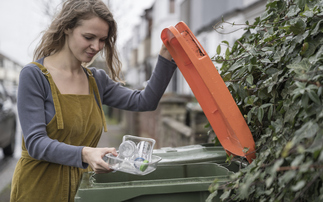I'm strongly persuaded in principle that we need far more pumped storage than we have at the moment, and that, with capacity payments, it could certainly come on stream as an alternative to the endless building of new reserve power stations. Especially since its key benefit will be to take (almost certainly) renewably produced electricity when it emerges at an inconvenient time, and translate it into useable electricity at peak times, thus defraying much of the variability of large-scale wind.
But since it looks likely that capacity payments will be auctioned, what if storage turns out to be so comparatively expensive that it is a non-starter against other forms of reserve capacity?
Well, dear reader, I have looked at it. Or to be precise, I've located some very interesting stuff that someone else has done, and then it gets a bit... well, curious.
The source is the Mott MacDonald report UK Electricity Generation Costs Update, published in an extremely obscure corner of the DECC statistics web pages. It is referred to (except that link doesn't work) in the Electricity Market Reform Consultation document (p.33), but oh dear, there's bad news for storage. "Most storage technologies are in early stage (sic) of development. The costs of many technologies do not compare favourably with conventional generation technologies," the document says before guiding us to the link that doesn't work.
But never fear, the Mott Macdonald document can be read here, and all is not lost. Tucked away at the end of the document (appendix c), you'll find what Mott MacDonald considers the "levelised costs" of pumped hydro storage to be.
They come out at £83 per megawatt hour. This comes in well below similar levelised costs for anaerobic digestion, combined heat and power, and energy from waste.
If you turn to a better-trod corner of the report, it comes in only just above the levelised cost of unabated gas combined cycle gas turbine (£80 per Mwh) and below nuclear at £100 per Mwh.
So then: not really that expensive, and not really that unfavourable compared to conventional technologies. But I'm sure that if you take immaturity, volatility, geographic limitations, etc. into account, it probably turns out otherwise. Or maybe I've just misinterpreted the figures.
It would be good if someone who really knows could tell me, because otherwise I might just think that electrical storage is far more of a real starter than I had previously thought.
This post first appeared on Alan's Energy Blog.
Dr Alan Whitehead is the Labour Member of Parliament for Southampton Test. He is a member of the House of Commons Energy and Climate Change Select Committee, as well as the Environmental Audit Select Committee, and has been on the Public Bill Committees for every major piece of UK energy and climate change legislation in recent years, including the Climate Change Act 2008. He is also chairman of a number of cross-party groups on these issues.





